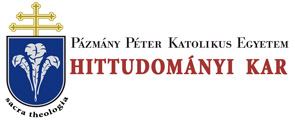Folia Theologica et Canonica 9. 31/23 (2020)
Recensions
350 RECENSIONS tappié’s complex scientific methodology. Here he dedicates particular attention to the analysis of the canonical material’s juridical structure, to the internal superimposition of the canonical system, and also to the description of difference and harmony of the single paradigms (means: principles) [pp. 11-17]. After these, the Author comes to the explanation of the analyzing-method’s application, regarding the epochs - i.e. classical. Tridentine, codified - of canon law history (pp. 19-43). Within these I must emphasize primarily the theme of renewing the ethical - juridical system which linked to the Tridentine epoch (pp. 31-32). The second chapter examines that effect of the CIC (1917) - conclusion of the first codification - on the day-to-day life of the Church (pp. 45-71). Here, the Author explains the historical background of the canonical codification; the problems and circumstances of renewal of the ecclesiastical legislation; the stand point of pope St. Pius X on the meaning of codification, its methodology and goal. Carlo Fantappié underlines the pope concept on keeping the continuity between the original - historic — sources and the realization of the codification, together with application of the pastoral emphasizes, ecclesiological principles, and the difficulty of arranging in united and up-to-date form of the canonical material. He deals also with the role of the CIC (1917) in the life of the Church, and its effect on the self-interpretation of the Church. Within the third section, Prof. Fantappié turns his attention to the magisterial analysis of the CIC (1917) as compared with the post Second Vatican Council epoch and documents, pp. 73-107). He observes at this part the special role of law in the Church’ life, furthermore, the novelties of the Latin and Oriental codification (i.e. CIC [1983], CCEO [1990]) - dealing particularly with the continuity of ecclesiastical legislation and with enlightening of cases of discontinuity as well as with comparative valuation of the CIC (1983) and the CCEO (1990). The fourth chapter is dedicated entirely to the presentation of the main elements of those canonical and theological reforms which happened in the Church as effect of the Second Vatican Council (pp. 109-142). Finally, the fifth chapter - according to the first four chapters - methodizes the new principles within the canon law system - i.e. paradigms - considering this new epoch as time of a new “corpus iuris” and of a ne “corpus concilii”, together with redefinition of the methodological principles (pp. 143-187). Prof. Fantappié shows the canonical system - through the consequent explanation of the afore-mentioned new structure - as a real ‘legal system’, wherein we can speak about the existence of real Taw’. This Taw’ is defined by theology, therefore its contents defined by the Revelation and eventuates a particular sacred law system. Hence, canon law science must be recognized as a real and independent - distributed into several disciplines and fields - science, with own methodology (pp. 11-12). This assertion is grounded not
